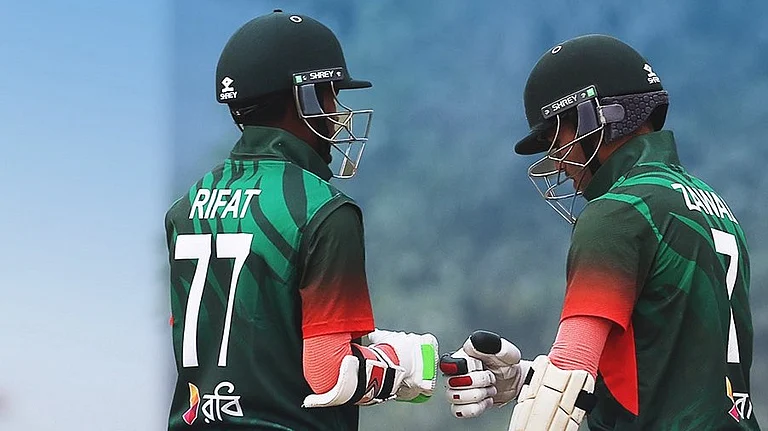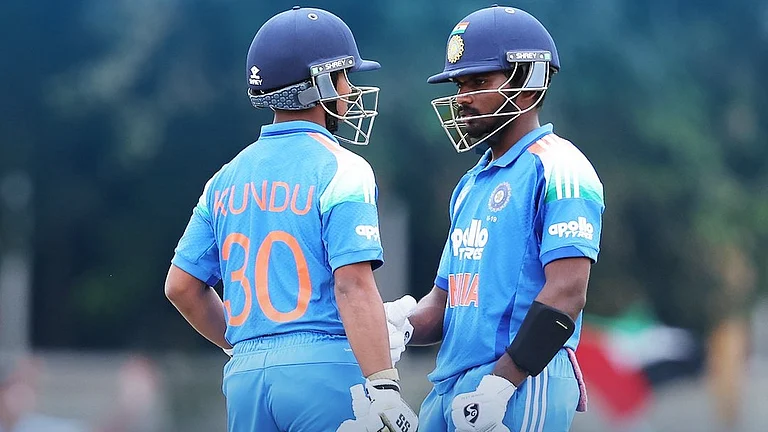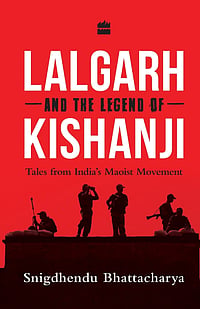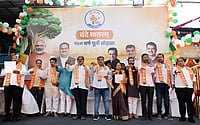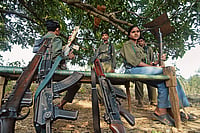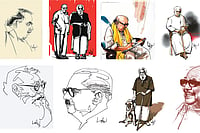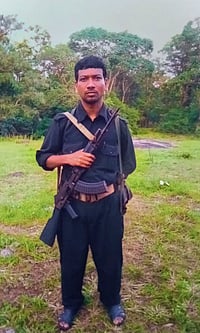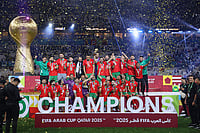Written in 1977, Gaon Buro is the story of an old man on a journey to meet a seer who supposedly has all the answers to the problems on Earth. On his way, he meets people who ask him to get solutions for their problems as well from the seer.
Amar Mitra, who had been writing short stories in Bengali since the 1970s, had earned quite a reputation for himself in literary circles by the 1980s, which fetched him invitations to writers’ conferences outside the state. However, Mitra had one problem. None of his stories was translated. It is why he could not present his work at these conferences outside West Bengal.
In 1987-88, as Calcutta-based journalist Anish Gupta recalls, before attending one such conference in North India, Mitra requested Gupta to translate Gaon Buro. Mitra went to the conference with the translated work. Upon being read, it was highly appreciated by writers from other states. Since then, Mitra read it at several conferences, and it was almost always received with praise.

A turning point in the life of the story came in September 2019, when he gave a speech at the First Forum of Asian Countries’ Writers in Kazakhstan. The speech drew heavily from the story. It was met with applause and several people came to meet him thereafter. One of them insisted that he must get the story translated and published. Gupta then reworked it slightly and the story, titled The Old Man of Kusumpur, was published in the American journal, The Common, in March 2021. Subsequently, in May, the first book of translations of Mitra’s writings—six stories by six translators under the title The Old Man of Kusumpur and other Stories, was published from Calcutta.
This April, the short story won the coveted O. Henry award, after which a fresh print edition was published, incorporating the news on its cover. After five decades of voluminous literary work, Mitra, a retired government officer, may finally get the broad readership that his stories deserve. “Translation from Bengali to English has gained some popularity in only about the last decade. There is no lack of able persons for translating the classics and contemporary Bengali literature into English. But lack of interest on the part of publishers kept only a limited number of people interested in it,” says Gupta. Had the English publishing industry shown interest in Bengali, many more Bengali masterpieces would have attained greater fame by now, he adds.

Bengali gave Asia its first Nobel Laureate in Literature in 1913 with Rabindranath Tagore, and powerful 20th-century writers like Sarat Chandra Chattopadhyay, Manik Bandyopadhyay, Bibhutibhushan Bandyopadhyay, Tarasankar Bandyopadhyay and Jibanananda Das. Most of the available English translations of their classics are recent, and translations of their work in other Indian languages, however, are more visible.
For years, due to historical reasons of Bengal being the hub from where the British Empire spread to other parts of India, Bengali has had dominance among other Indian languages when it came to literature translated into other languages—English and other Indian languages as well. For the late 19th and early 20th century writers, the examples of Bengali writers getting translated in other Indian languages are more than literature from other Indian languages getting translated into Bengali.
Phulmoni Ennum Koruna Ennum Peraya Randu Streekalude Katha, the first novel printed and released in Malayalam, was actually a translation of what some considered to be the first novel written in Bengali, or any Indian language—Phulmoni to Korunar Biboron by Hana Catherine Mullens, who was born in Chinsurah, about 40km north of Calcutta, to Swiss protestant missionary parents in 1826. The original piece was published in 1852.

However, academics later tended to consider Bankim Chandra Chattopadhyay’s 1865 work, Durgeshnandini, as the first novel in Bengali or any Indian language. It was translated into English by Charu Chandra Mookerjee and published by Calcutta-based H.M. Mookerjee & Co. in 1880. His second novel, Kapalkundala, was published in 1866. Bengal Civil Service officer H.A.D. Phillips’ translation of the work was published from London by Trubner & Co. in 1885.
Tagore had two books published from London before winning the Nobel—his poetry collection, Song Offerings, made of poems he himself translated, was published by Macmillan from London in 1912 and a collection of short stories translated by Rajani Ranjan Sen, published by Luzac & Co in early 1913. After the Nobel fame, his works were translated exhaustively, in almost all Indian languages and many international languages. However, the immediate post-Tagore era writers—the three Bandyopadhyays and Jibanananda Das, the writers of the 1920s, 30s and 40s—did not have the fortune of seeing much of their work translated during their lifetime. Whether this happened as an impact of shifting the British capital from Calcutta to Delhi in 1911 or a change of focus from culture in the post-WWI Imperial rule, remains debated. But the fact remains, Bibhutibhushan’s first novel, Aam Atir Bhepu (1929), was translated into English after Satyajit Ray’s Pather Panchali (1955) made it famous.
A majority of the English translations of the Bengali classics available now were translated and published over the last decade, in many cases after the copyright had expired. The 1960s were an exception, when contemporary Bengali poetry was published in English by many small but influential presses in the US. There are highly-esteemed post-Tagore writers like Jagadish Gupta, Amiya Bhushan Majumdar, Kamal Kumar Majumdar, Sandipan Chattopadhyay and Debesh Roy, to name a few, but very little or anything at all of their works are available in English or other Indian languages.
Among important post-independent writers, the prose of Subimal Misra and poems of Joy Goswami were translated into English to some extent, but even the works of as major a poet as Sankha Ghosh remain scarcely translated. It’s the similar case for influential
poets like Binoy Majumdar and Bhaskar Chakraborty. Mahasweta Devi remains an exception, as she is widely translated in other Indian languages and English as well. Among contemporary writers, Manoranjan Byapari is quite extensively translated. But it took time. The first recognisable Dalit voice in Bengali literature, Byapari had written over a dozen novels and about 100 short stories, apart from essays, by the time his autobiographical novel, Itibritte Chandal Jiban, won the Bangla Sahitya Academy Award in 2014. The turning point for him came in 2018, when the book was translated to English as Interrogating My Chandal Life and bagged The Hindu Prize.
Since then, two more of his novels have been published in English, besides some in Malayalam, Hindi and Odia. Proposals of more translations are under consideration. “Translations, especially those in English, have a very important role not only in broadening a writer’s readership, but also in helping her/him earn a little more to be able to devote more time to literature,” Byapari tells Outlook. “In Bengal, no litterateur, except for the likes of Samaresh Basu and Syed Mustafa Siraj, has been able to survive on earnings from writings. Publishers pay so little. All major writers have other jobs. A readership outside Bengal can be of some help in this regard.”







